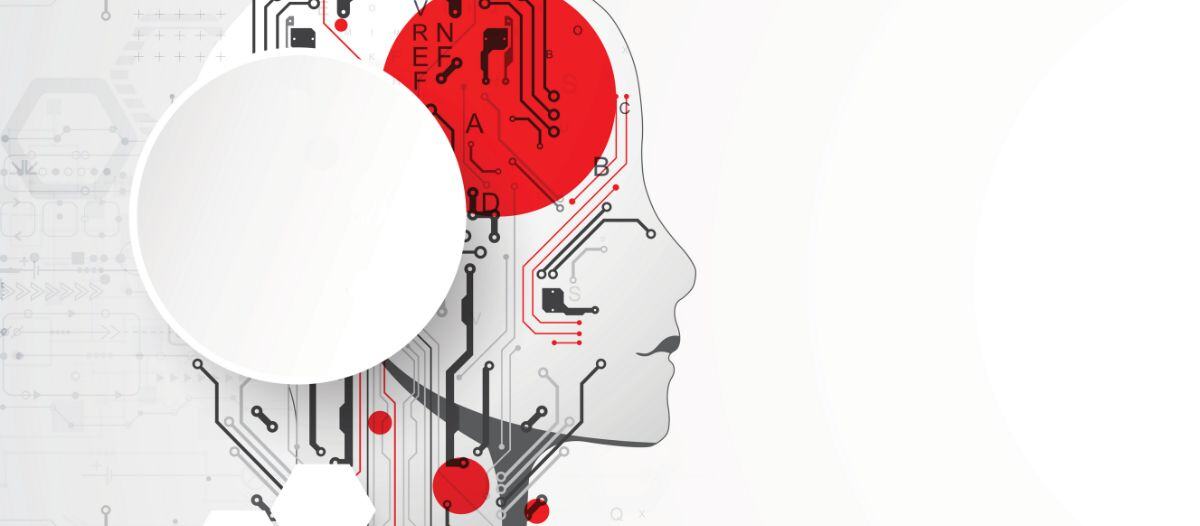Robot-proofing FM
Changing the narrative for higher education & practice in the Re:20s

Three-time Pulitzer Prize winner, author and New York Times columnist Thomas Friedman called this era “the age of accelerations,” in which stunning advancements and horrific dislocations are causing radical uncertainties. According to Friedman, humans are “lifting the lids on two giant Pandora’s boxes at the same time, without any idea of what could come flying out.” One of those boxes is climate change; the other is artificial intelligence (AI). Friedman questions what ethical and regulatory standards must be put in place to avoid devastating consequences once those lids are open.
The University of California, Berkeley recently opened its own Pandora’s box when it planned to close its 67-year-old anthropology library to save money. In protest, students staged an 85-day sit-in – from April to mid-July 2023 – at the George and Mary Foster Anthropology Library, described by one student as “the backbone of the department central to rebuilding community after the isolation of the pandemic.”
As the university prepared to move approximately 80,000 books on the studies of humanities, societies and cultures, and field notes to a warehouse, construction continued on its 367,270-square-foot, US$550 million Gateway building, home to the College of Computing, Data Science and Society.
The protest was supported by consumer advocate Ralph Nader, former California governor and anthropology lecturer Jerry Brown, and British author and journalist Gillian Tett who wrote: “In an age where technology companies have eroded tools designed to send us down our own intellectual rabbit holes, we should champion the value of browsing books in a physical sense.” In her Financial Times article, “I Stand with the Protestors in Berkeley's Battle of the Books,” Tett quotes business anthropologist Patricia Easworth: “The ascendance of AI demands that we pay more, not less, attention to humanistic values and scholarship.”
In the age of accelerations, social sciences are being eclipsed by data science; but the reality is that both are crucial to robot-proofing the future workplace. The automated, virtual realm has its benefits, but physical contact – with books, with people, with surroundings – is vital to engaging with and understanding the world, finding a sense of community and belonging, and gaining knowledge through direct discovery. The UC Berkeley students wanted the experience of finding and reading a book in a comfortable environment dedicated to their interests. It is a striking example of an area in which facility management has another opportunity to advise decisions that best serve and benefit all stakeholders.
Answering 3 Big Questions
Higher education is undergoing a transformation, as is every industry in the age of accelerations, driven by three main questions:
-
Is higher education still relevant today?
-
No, it is too expensive. As the cost of attending a four-year college has escalated with U.S. student debt at US$1.7 billion, students and parents are questioning the investment.
-
No, it is not worth as much public funding, so state and federal funding has decreased. Public opinion polls indicate a diminishing view of the necessity of a college degree. According to Gallup, positive reaction has decreased from 74 percent in 2013 to 41 percent in 2023.
- No, due to a tight labor market, some U.S. states (Maryland, Massachusetts, Pennsylvania, New Jersey, Washington, Utah) and federal agencies are no longer requiring a four-year degree for some jobs. In the private sector, Google, IBM, Apple, Delta and GM are doing the same.
- How is AI going to change higher education?
No one knows exactly how. But scientists, futurists, scholars and techies have provided sober warnings of AI’s influence on everything from marketing to elections. Professor in the Department of History at the Hebrew University of Jerusalem Yuval Noah Harari has expressed this most clearly: What is flying out of the box is “hacking into humanity’s operating system, civilization, through its mastery of language, which could end the dominance of humans in history. It is not how science fiction has described it as the fear of aliens physically attacking our world, but how this alien intelligence can influence our minds. We have the first primitive examples of this with how social media can do this by influencing our purchasing decisions and voting and how so many people can no longer believe, what we all took for granted, as the ‘truth’.”
- Should humanities be taught at all because students should be preparing for jobs after graduation?
Lately, the answer heard in U.S. university corridors is no. “Enrollment in the humanities is in free fall around the country,” wrote Nathan Heller in his article “The End of the English Major.” Facts to support this include:
-
Since 2013, the study of English and history has decreased by a third, humanities decreased by 17 percent, while the number of STEM-related (science, technology, engineering and math) degrees has soared;
-
From 2013 to 2016, 651 foreign language programs closed; and majors in classics, the arts and religion were eliminated;
-
In February of this year, Virginia’s Marymount College trustees voted to eliminate English, history, art, philosophy and sociology courses completely;
-
Federal funding reflects the same attitude when the National Science Foundation received 50 times more funding than the National Endowment for the Humanities.
Reimagining FM higher education
To better prepare future FM leaders to combine the sciences and humanities for a balanced built environment, a new approach to learning and skill training must be considered.
-
Ensure FM degree programs include interdisciplinary courses in formal and social sciences, architecture and the humanities. One suggestion is a course on When Brains Meet Buildings, which is about neuromorphic architecture, a future of buildings that have an interconnected, intelligent system of systems whose spatial layout is developed to be both functional and harmonious to serve the needs of its human inhabitants. The building learns through adaption from the deep learning of AI and has been called an “inside-out robot or embrained body.” ANFA (Academy of Neuroscience for Architecture at Salk Institute and UCSD) can help FM keep up with developments in this area.
-
Incorporate new cognitive skill training in the FM curriculum for robot-proofing, comprising different types of thinking, including design, systems and cognitive endurance. The latter is taught in a popular course at the University of Pennsylvania, Living Deliberately, in which each week students read about monastic traditions and adopt some of the practices. No jewelry or make-up is allowed. They surrender their smart phones to the professor and, at some point, adopt a vow of silence for a month. The objective is to realize that technology is only a tool, not a master, and it is important to take time for contemplation in an always-on world.
-
Add a course on anthro-vision taught by anthropologists for scientists, facility management, architecture and humanities majors. Journalist Gillian Tett describes anthro-vision as an added framework that creates a richer view of the world. This new lens involves 3D micro-analysis across networks of people to understand human behavior. Companies such as Intel, General Motors, Procter and Gamble have used anthro-vision in their business practices to increase business results.
-
Embed sustainable development best practices and technologies within the FM core competencies, and in construction, real estate and architecture courses, rather than separating sustainable development into optional learning modules.
Reimagining FM practices
-
Create project scopes that ensure there is FM input in the early design phase of a building project. FMs should be able to ask questions and make suggestions based on their knowledge of occupants’ needs, as well as the requirements for maintainability of materials and systems, health considerations and functional design requirements for the early programming phase for design. If an FM had been involved in the initial design decisions of UC Berkeley’s new science building, they may have proposed moving the anthropology books to a dedicated room in the new science building to support interdisciplinary learning; large enough for a class to be held, like one on anthro-vision suggested above.
-
Make the business case for investing in a digital twin of the building or buildings on a campus, which is a virtual model of the structure and systems, and can be based on the efficiencies of operations, including predictive maintenance. A further concept is the cognitive digital twin, which could be deployed for neuromancy architecture that captures all the relevant attributes and behaviors of a building including physical and virtual entities, as well as the interactions between the two.
Conclusion
In a recently published book, “Power and Progress,” two MIT (Massachusetts Institute of Technology) professors prove that for the last thousand years, progress in society has been dependent upon the choices made about technology. The way people design production and communications can either serve the elites of the world or lead to widespread prosperity. However, as columnist Maureen Dowd has said, today “we are at the mercy of the lords of the cloud, high on their own supply, who fancy themselves as gods creating life.” And these elite lords are profiting like never before with AI as they rush to release the latest versions into the world.
The MIT professors drew from the U.S. Progressive Era for inspiration – a period of social activism in the early 20th century, promoting economic reform, labor rights and social welfare – suggesting people “alter the narrative and change norms.” The entire built environment community must make the choice of not accepting what author and social psychologist Shoshana Zuboff calls” surveillance capitalism” – using personal data to target consumers more precisely. People must slow down, get educated, get regulated and figure out how humans and machines can work together to make the world a better place – a place in which they can all work together to achieve the U.N.’s Sustainable Development Goals, closing the lid on fear, mistrust, conflict and misunderstanding.

Nancy Sanquist, IFMA Fellow, is a professional involved in the built environment for the last few decades. She is the Past Chair of the IFMA Foundation, with which she has worked for the last six years. She is a co-founder of the Global Workforce Initiative (GWI) and the Workplace Evolutionaries, and is the author of many articles and co-editor of books on FM/CRE, technology, architecture, urban planning and maintenance including the award-winning book series titled “Work on the Move (1&2).” She is working on a new book on “Reimagining Place in the 21st Century.”
References
Friedman, Thomas. "We Are Opening the Lids on Two Giant Pandora’s Boxes." May 2, 2023. The New York Times; nytimes.com/2023/05/02/opinion/ai-tech-climate-change.html
Arango, Tim. "In Berkeley, a Library Protest Is a Fight for Anthropology in an A.I. Age." May 2, 2023. The New York Times; nytimes.com/2023/05/02/us/anthropology-library-berkeley.html
Tett, Gillian. "I Stand with the Protesters in Berkeley’s Battle of the Books." May 10, 2023. Financial Times; ft.com/content/661eae5e-bc2e-4cf9-97b9-bfb3424b48da
YouTube episode of a “Frontiers Future” lecture by Harari, May 14, 2023,
youtube.com/watch?v=WiN-LuRe6w
Heller, Nathan, "The End of the English Major," Feb. 27, 2023, The New Yorker; newyorker.com/magazine/2023/03/06/the-end-of-the-english-major
Dowd, Maureen. “Don’t Kill ‘Frankenstein’ With Real Frankensteins at Large.” The New York Times. May 28, 2023.
Arbib, Michael A. “When Brains Meet Buildings. A Conversation Between Neuroscience and
Architecture.” New York: Oxford University Press, 2021.
Worthen, Molly. “Universities, Meet Monasteries.” The New York Times, May 28, 2023.
Tett, Gillian. “Anthro-vision. A New Way to See in Business and Life.” New York: Avid Reader Press, 2021.
Daron Acemoglu and Simon Johnson. “Power and Progress. Our 1,000-Year Struggle Over Technology and Prosperity.” New York: Hachette Book Group, Inc., 2023.
Read about the beneficiaries of the AI gold rush in the Economist article June 3, 2023, “There’s AI in Them Thar Hills.”
Zuboff, Shoshana. “The Age of Surveillance Capitalism. The Fight for A Human Future at the New Frontier of Power.” New York: PublicAffairs, 2019.
Read more on Technology and Training
Explore All FMJ Topics









